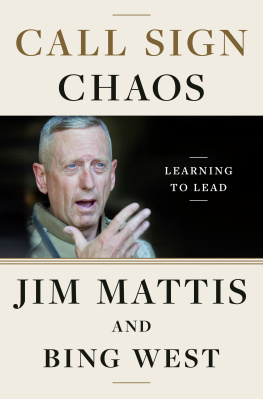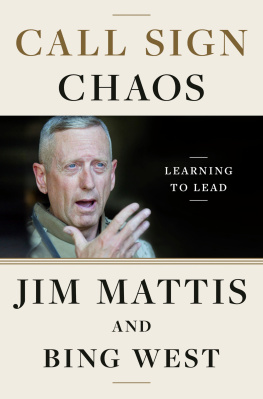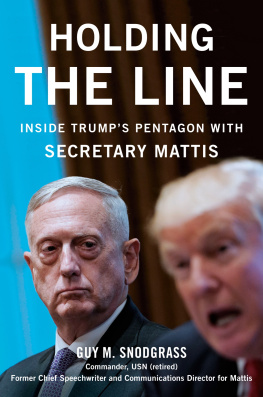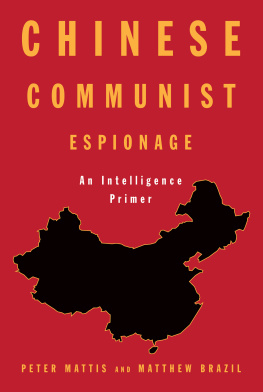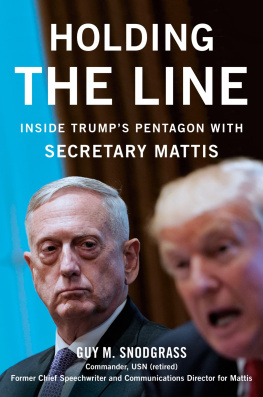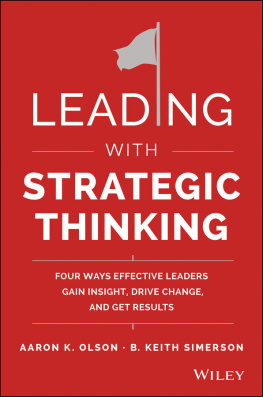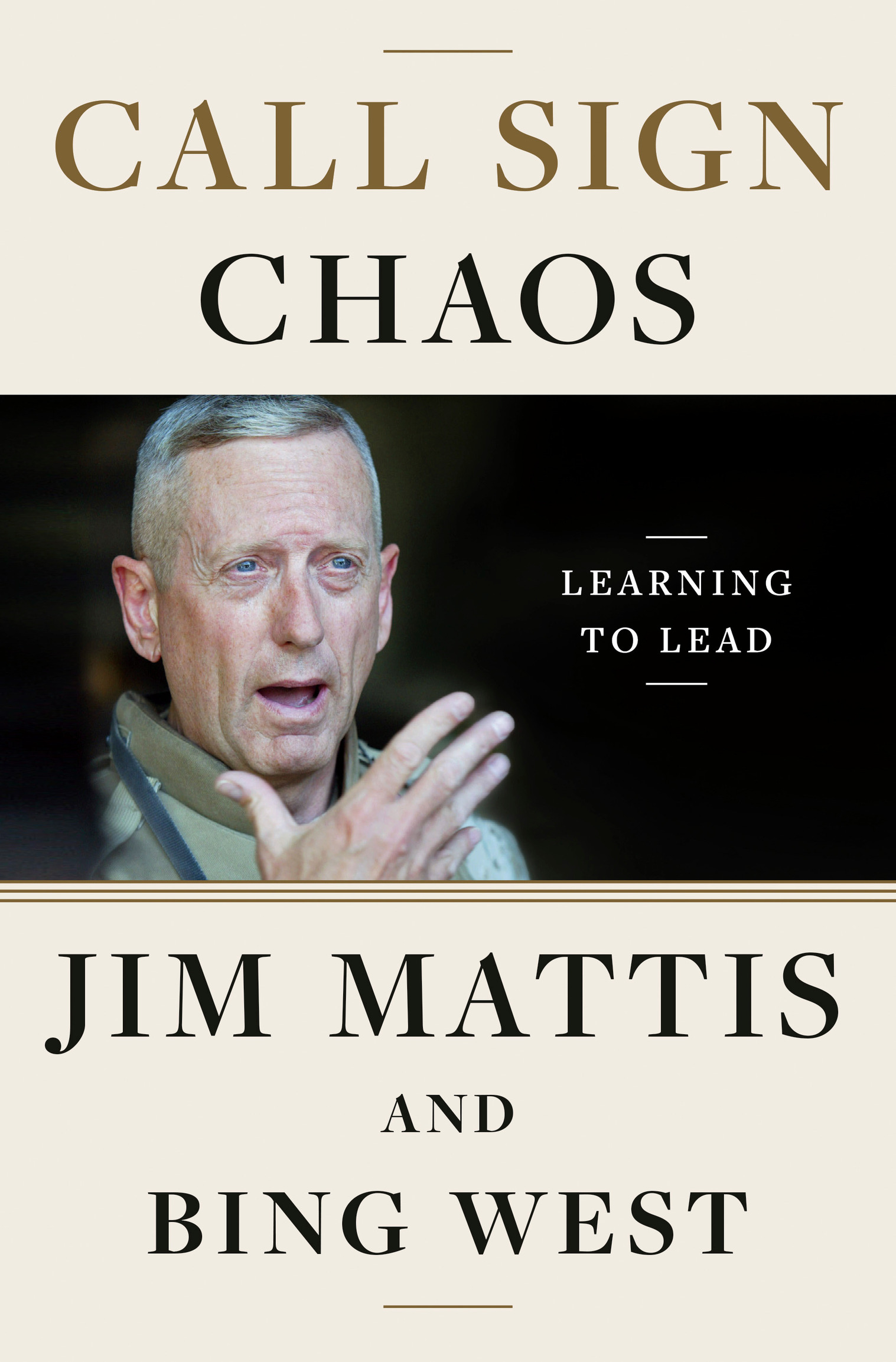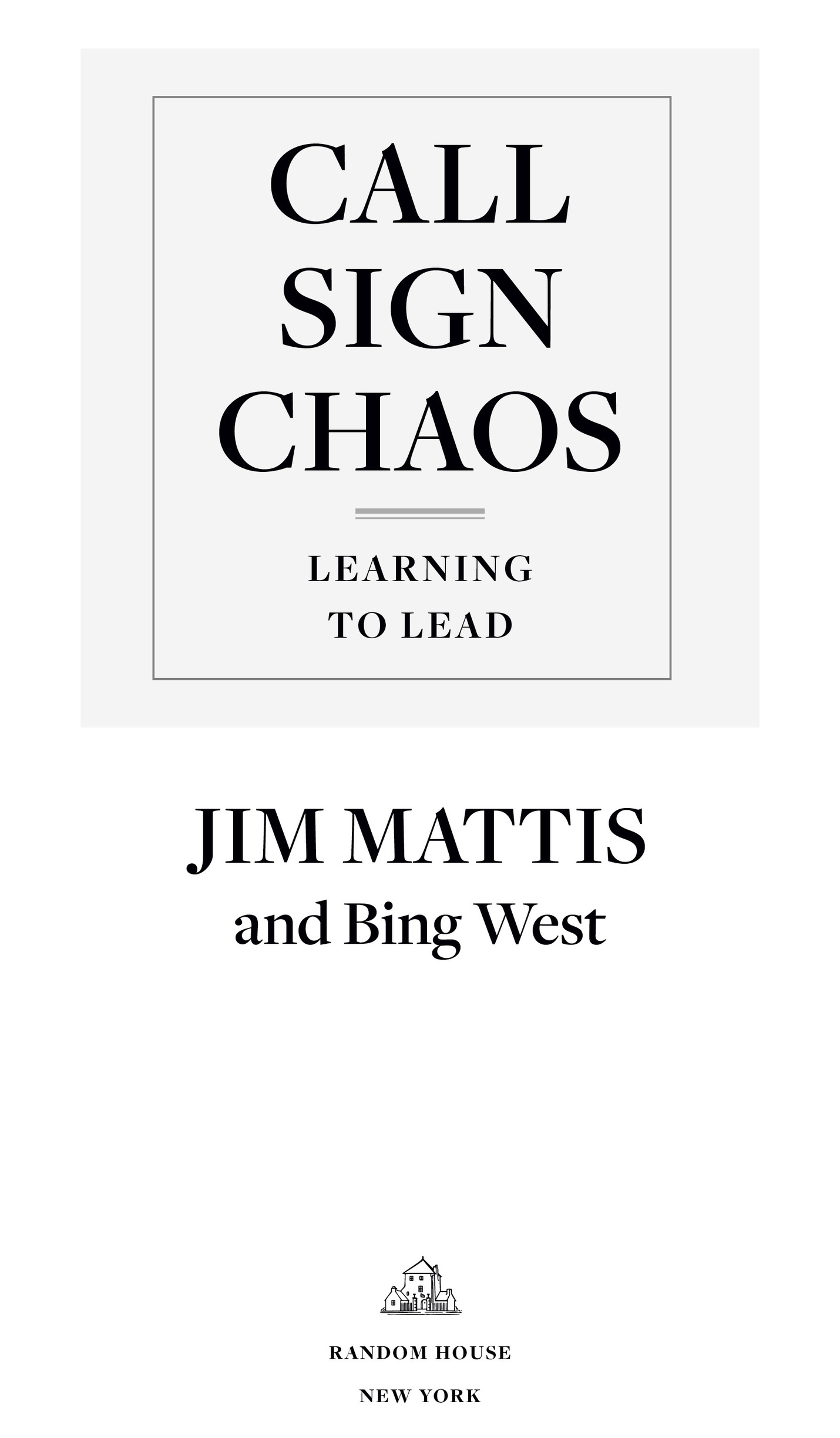The views expressed in this publication are those of the authors and do not necessarily reflect the official policy and position of the Department of Defense or the U.S. government. The public release clearance of this publication by the Department of Defense does not imply Department of Defense endorsement or factual accuracy of the material.
Copyright 2019 by James N. Mattis and Francis J. West
Maps copyright 2019 by David Lindroth Inc.
All rights reserved.
Published in the United States by Random House, an imprint and division of Penguin Random House LLC, New York.
R ANDOM H OUSE and the H OUSE colophon are registered trademarks of Penguin Random House LLC.
In late November 2016, I was enjoying Thanksgiving break in my hometown on the Columbia River in Washington State when I received an unexpected call from Vice Presidentelect Pence. Would I meet with President-elect Trump to discuss the job of Secretary of Defense of the United States? I had taken no part in the election campaign and had never met or spoken to Mr. Trump, so to say that I was surprised is an understatement. Further, I knew that, absent a congressional waiver, federal law prohibited a former military officer from serving as Secretary of Defense within seven years of departing military service. Given that no waiver had been authorized since General George Marshall was made secretary in 1950, and Id been out for only three and a half years, I doubted I was a viable candidate. Nonetheless, I flew to Bedminster, New Jersey, for the interview.
I had time on the cross-country flight to ponder how to encapsulate my view of Americas role in the world. On my flight out of Denver, the flight attendants standard safety briefing caught my attention: If cabin pressure is lost, masks will drop.Put your own mask on first, then help others around you.Weve all heard it many times, but in that moment, these familiar words seemed like a metaphor: to preserve our leadership role, we needed to get our own countrys act together first, especially if we were to help others.
The next day I was driven to the Trump National Golf Club and, entering a side door, waited about twenty minutes before I was ushered into a modest conference room. I was introduced to the President-elect, the Vice Presidentelect, the chief of staff, and a handful of others. We talked about the state of our military, where our views aligned and where they differed. In our forty-minute conversation, Mr. Trump led the wide-ranging discussion, and the tone was amiable. Afterward, the President-elect escorted me out to the front steps of the colonnaded clubhouse, where the press was gathered. I assumed that I would be on my way back to Stanford Universitys Hoover Institution, where Id spent the past few years doing research and guest lecturing around the country, and was greatly enjoying my time. I figured that my strong support of NATO and my dismissal of the use of torture on prisoners would have the President-elect looking for another candidate. Standing beside him on the steps as photographers snapped away and shouted questions, I was surprised for the second time that week when he characterized me to the reporters as the real deal. Days later, I was formally nominated. That was when I realized that, subject to a congressional waiver and Senate consent, I would not be returning to Stanfords beautiful, vibrant campus.
During the interview, Mr. Trump had asked me if I could do the job of Secretary of Defense. I said I could. Id never aspired to the job, and took the opportunity to suggest several other candidates I thought highly capable of leading our defense. Still, having been raised by the Greatest Generation, by two parents who had served in World War II, and subsequently shaped by more than four decades in the Marine Corps, I considered government service to be both honor and duty. In my view, when the President asks you to do something, you dont play Hamlet on the wall, wringing your hands. To quote a great American athletic companys slogan, you just do it. So long as you are prepared, you say yes.
When it comes to the defense of our experiment in democracy and our way of life, ideology should have nothing to do with it. Whether asked to serve by a Democrat or a Republican, you serve. Politics ends at the waters edge. This ethos has shaped and defined me, and I wasnt going to betray it no matter how much I was enjoying my life west of the Rockies and spending time with a family I had neglected during my forty-plus years in the Marines.
When I said I could do the job, I meant I felt prepared. By happenstance, I knew the job intimately. In the late 1990s, I had served as the executive secretary to two Secretaries of Defense, William Perry and William Cohen. I had also served as the senior military assistant to Deputy Secretary of Defense Rudy de Leon. In close quarters, I had gained a personal grasp of the immensity and gravity of a SecDefs responsibilities. The job is tough: our first Secretary of Defense committed suicide, and few have emerged from the job unscathed, either legally or politically.
We were at war, amid the longest continuous stretch of armed conflict in our nations history. Id signed enough letters to next of kin about the death of a loved one to understand the consequential aspects of leading a department on a war footing when the rest of the country was not. Its millions of devoted troops and civilians spread around the world carried out their mission with a budget larger than the gross domestic products of all but two dozen nations. On a personal level, I had no great desire to return to Washington, D.C. I drew no energy from the turmoil and politics that animate our capital. Yet I didnt feel inundated by the jobs immensities. I also felt confident that I could gain bipartisan support for Defense despite the political fratricide practiced in Washington.
In late December, I flew into Washington, D.C., to begin the Senate confirmation process.
This book is about how my career in the Marines brought me to this moment and prepared me to say yes to a job of this magnitude. The Marines teach you, above all, how to adapt, improvise, and overcome. But they expect you to have done your homework, to have mastered your profession. Amateur performance is anathema, and the Marines are bluntly critical of falling short, satisfied only with 100 percent effort and commitment. Yet over the course of my career, every time I made a mistakeand I made manythe Marines promoted me. They recognized that those mistakes were part of my tuition and a necessary bridge to learning how to do things right. Year in and year out, the Marines had trained me in skills they knew I needed, while educating me to deal with the unexpected.
Beneath its Prussian exterior of short haircuts, crisp uniforms, and exacting standards, the Corps nurtured some of the strangest mavericks and most original thinkers I would encounter in my journey through multiple commands, dozens of countries, and many college campuses. The Marines military excellence does not suffocate intellectual freedom or substitute regimented thinking for imaginative solutions. They know their doctrine, often derived from lessons learned in combat and written in blood, but refuse to let that turn into dogma. Woe to the unimaginative one who, in after-action reviews, takes refuge in doctrine. The critiques in the field, in the classroom, or at happy hour are blunt for good reason. Personal sensitivities are irrelevant. No effort is made to ease you through your midlife crisis when peers, seniors, or subordinates offer more cunning or historically proven options, even when out of step with doctrine.

